

William Stopford
The cars axed in 2025 that we'll miss the most
8 Hours Ago
Hyundai's hot i30 N launched with a focus on fun, both on the road and the track. How does it stack up in the hands of Chris Atkinson?
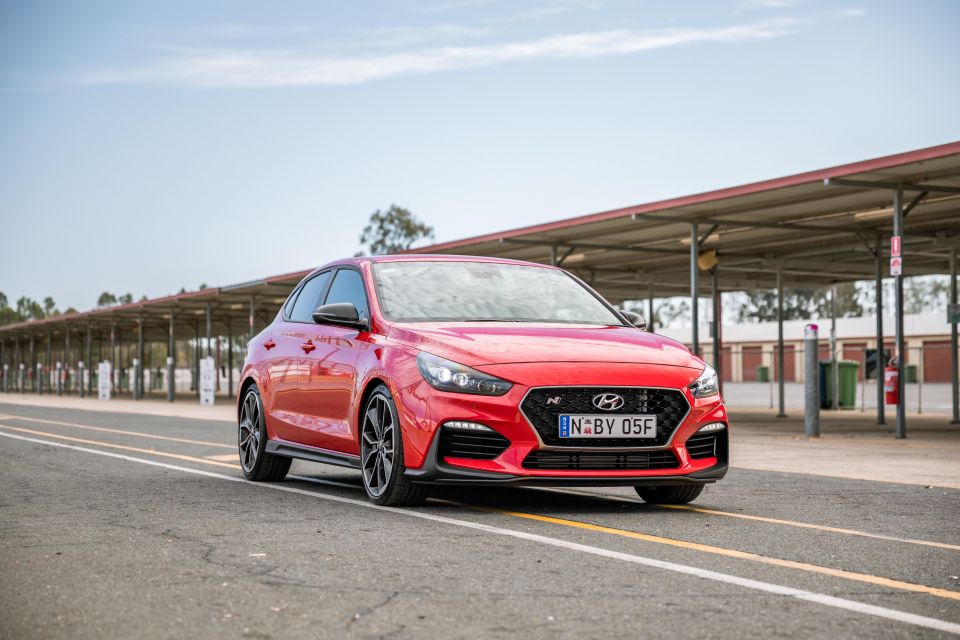


Performance Editor
New from
$41,400
excl. on-roads

Performance Editor
New from
$41,400
excl. on-roads


Performance Editor
New from
$41,400
excl. on-roads

Performance Editor
New from
$41,400
excl. on-roads
Quickly see how this car stacks up against its competition. Select any benchmark to see more details.
Where expert car reviews meet expert car buying – CarExpert gives you trusted advice, personalised service and real savings on your next new car.
Hyundai’s hot hatch-meets-coupe, the i30 Fastback N, is one of very few cars on sale in Australia that has a warranty for track driving.
How does it stack up in the hands of Chris Atkinson?
Hyundai has put together a really engaging and thoughtful package with the i30 Fastback N. The chassis, suspension, and transmission all work well together and the track-focused features, like the shift lights and more durable tyres, are nice touches to finish it off.
Hyundai is linking consumers to its motorsports program with the N brand, and I look forward to testing how this car evolves in the future.
The i30 N is very good at compartmentalising its capabilities. In normal mode with some firmness let out of the suspension, it’s quite good at soaking up typical urban bumps and corrugations. The ride is firm but never really jittery or crash-prone, meaning it won’t hurt your spine doing the daily drive.

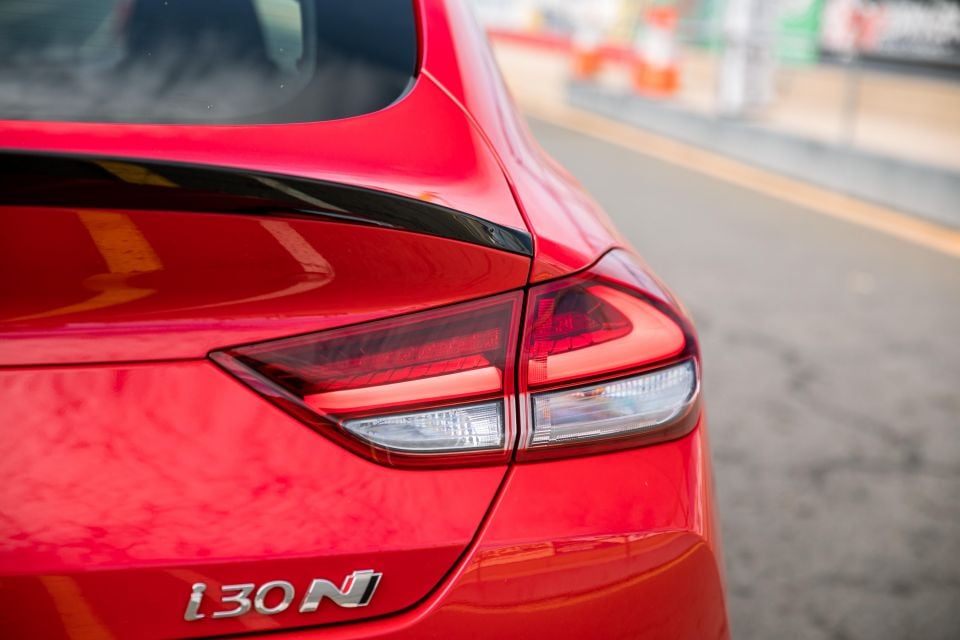
The change when flicking to Sport and Sport+ (the latter relaxes the ESC further) from Normal is quite noticeable, which Hyundai says is down to a revised logic tune designed to maximise what it calls the “character change” between the modes: the ride stiffens to the point that the car barely settles after rebound, but the body control becomes better suited to rapid directional changes.
The rack-mounted electric-assisted steering has ample resistance, and the chassis is quite happy to facilitate lift-off oversteer mid-corner.
The Pirelli tyres offer plenty of grip – though road noise is pronounced on coarse chip bitumen – and the LSD minimises understeer unless you really overcook it barrelling into a corner. Ventilated disc brakes are fitted at each end, measuring 345mm x 30mm at the front and 314mm x 20mm at the rear.
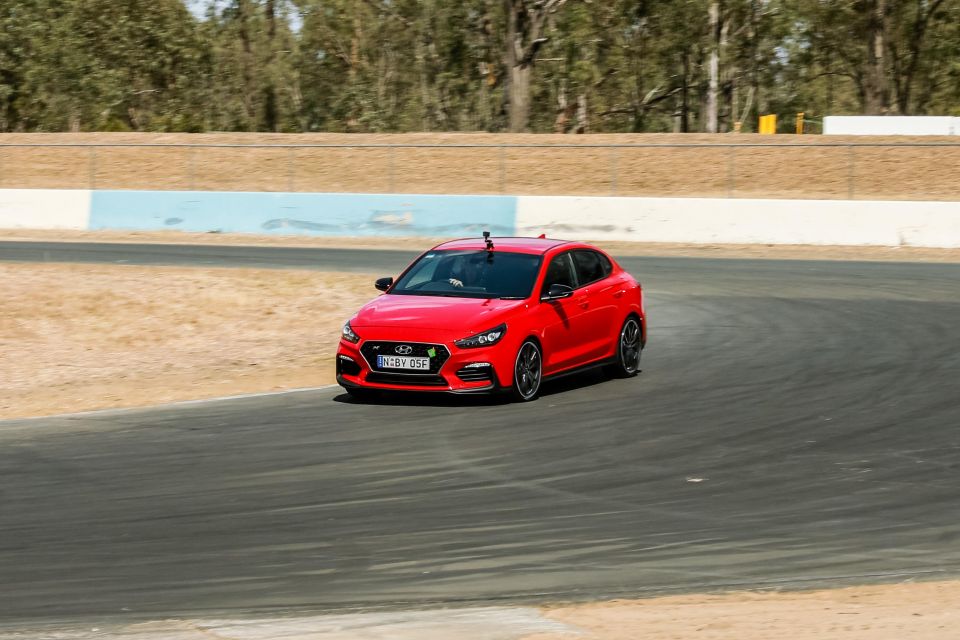
At about 1500kg the i30 N Fastback isn’t a featherweight, and it doesn’t feel quite as lively and razor-sharp from centre as a smaller pocket rocket like the Fiesta ST, however it feels planted and stable, lots of grip, and is happy to step out when pushed. And that soundtrack is great to boot.
The 2.0-litre turbocharged engine offers more than enough to make the i30 N a challenge on the track. With 202kW of power and 353Nm of torque, you have to be mindful of traction on corner exit.
The engine is nice and responsive when you pick up the throttle mid-corner but smooth at the same time, so you can control the power delivery.
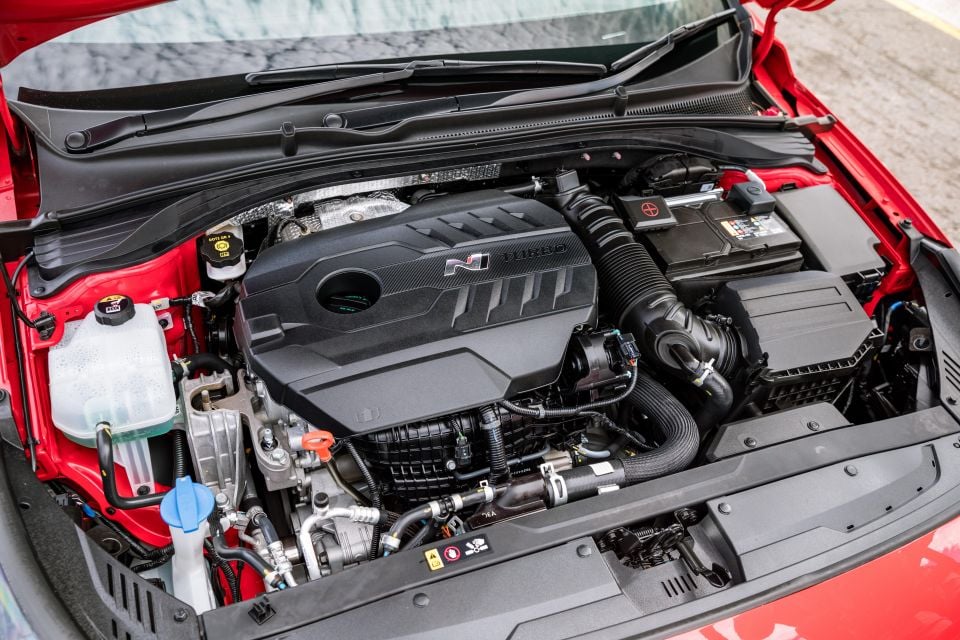
I did feel that out of the corner the torque and power bands could have overlapped a little better.
Through the mid-range of the engine as torque drops away and you rely more on engine power you need a good overlap, a bit like a sprinter handing the baton in a relay. This is really important coming onto the straights, because you carry that momentum for such a long time.
A wider torque curve would have helped this transition.
The brake pedal feel was really good and, although the stopping power could have been slightly better, the consistency over the laps was solid and gave me no concerns at all.
It’s definitely rare in a car of this price to have that strength on a track, it and shows Hyundai understands what’s important for a car you might take for some hot laps.
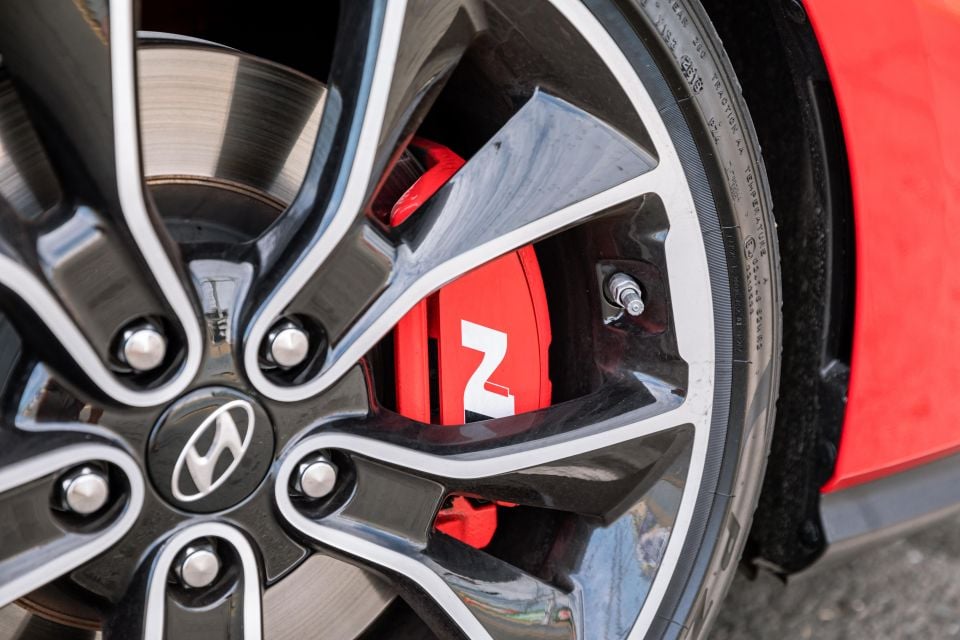
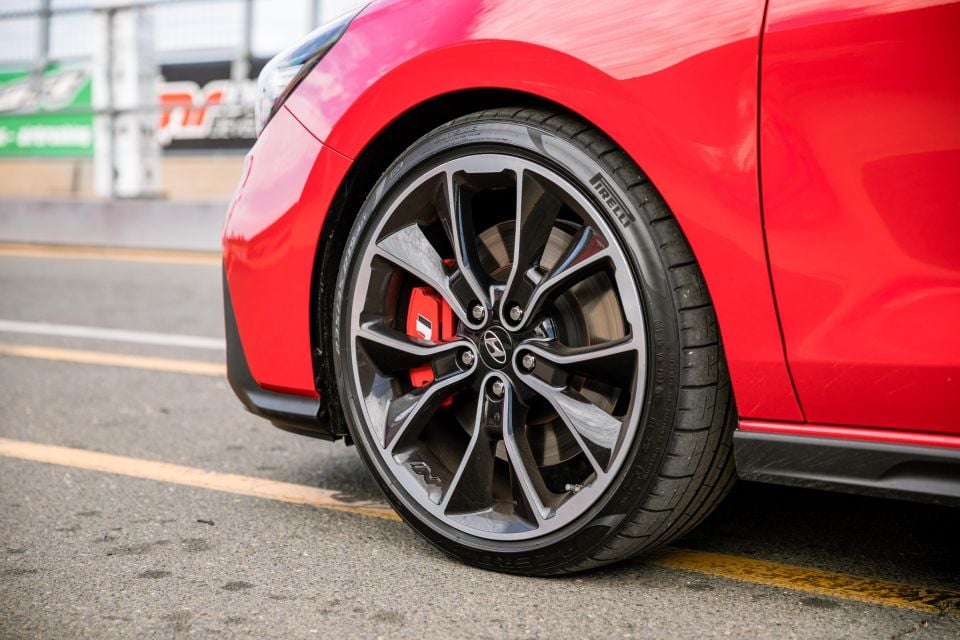
The pedal stayed firm and didn’t go long at all, and it was more the tyre grip the was the limiting factor in braking performance.
I really like the chassis and the way I could attack the track with this car! I never had any moments, and it was one of the few cars I have been able to send into the corners and maintain balance all the way through.
It was also progressive and easy to control at the limit, which points to good basic geometry as well as controlled damping.
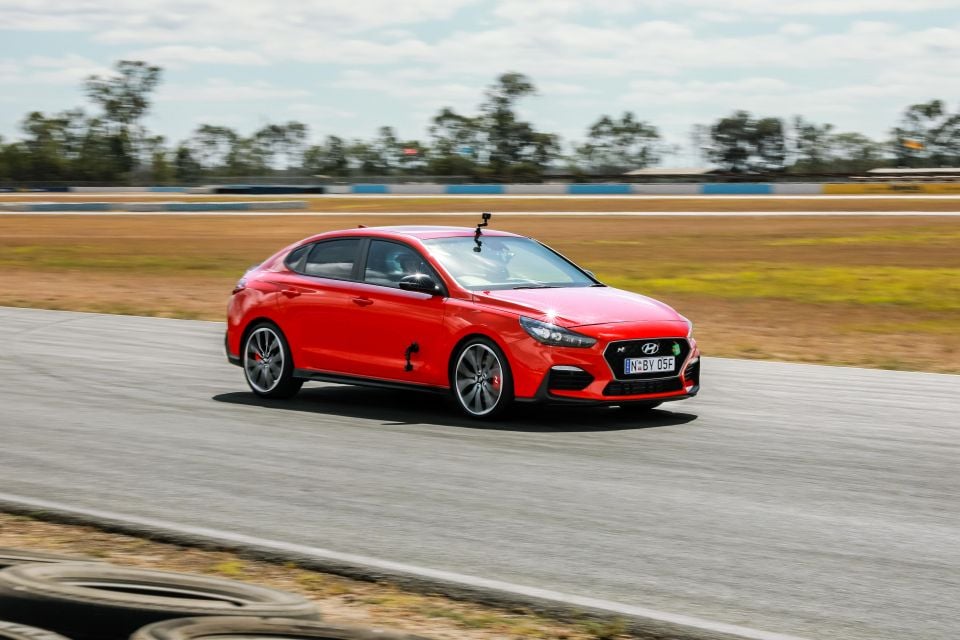
For a front-wheel drive car there was very little understeer and the slightly oversteer-focused chassis balance matched nicely with the front-wheel drive powertrain. I liked that I could adjust the line of the car at the limit with my own inputs, without the car ever dictating what was going to happen.
The gearbox was decent but not amazing. I would have liked it to be a little shorter and sharper, and found it a little challenge to shift perfectly when loaded and coming out of corners. I look forward to doing a lap when we get the new DCT early next year and would not be surprised if we take well over half a second off this time.
I thought the differential was good and most of the time did exactly what I wanted. I could place the front end very well on corner entry, and it felt free and open during this phase of the corner. This meant I could carry huge amounts of speed into both slow and fast corners without being forced into understeer.
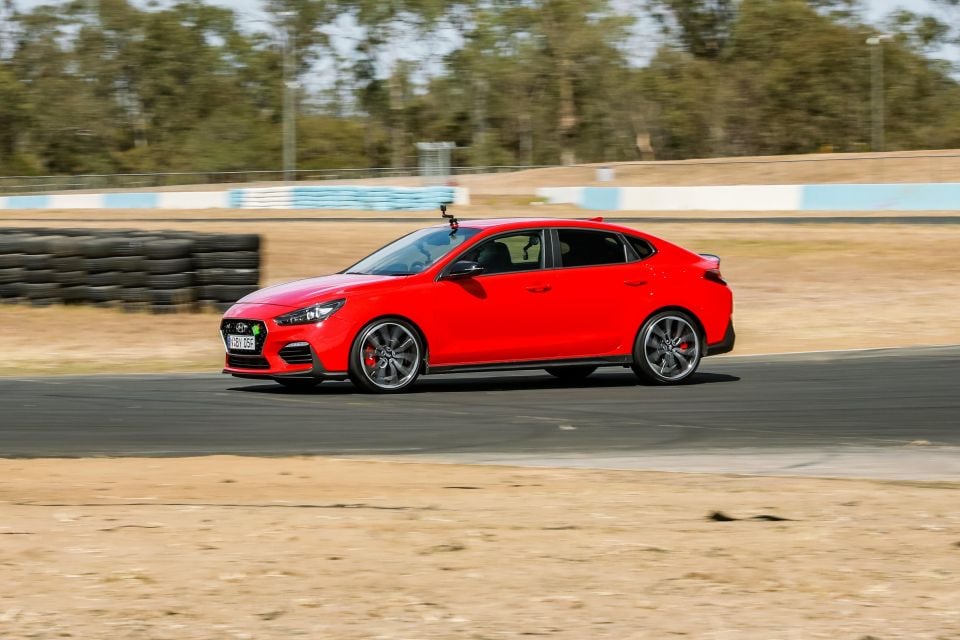
I also found traction out of the corners was close to perfect, which is so important in a front-wheel drive car. A couple of times the differential came in too quickly on early throttle and caused a bit of step, which shows Hyundai is pushing the boundaries more than other manufacturers – and I would rather have it that way than the alternative.
The suspension in this car has been tuned really well. The way it controlled wheel movements added massively to the experience while driving, and you can tell Hyundai expects this car to be driven hard on the track.
The suspension was stable, but also allowed movement when lightly loaded. This meant the inside wheel wouldn’t cause instability when using the kerbs or hitting bumps. It was one of the best cars so far on the exit kerbs for maintaining support while loaded, rather than giving up control.

I drove with the suspension in Sport mode, not the Sport+ mode. This gave me the movement I wanted for traction and rotation, but still offered a lot of stability.
Steering feel and feedback were excellent, especially when I started to push the limits. I had a really good understanding of what I could ask of the tyres and also knew exactly when I shouldn’t go any faster.
I think many modern cars have just ticked the box when it comes to steering feel, rather than really drilling down on what’s important to the driver.
The interesting thing is that although it might actually have very little effect on the overall lap time, especially once you are used to the car, it does play a big role in that feeling of engagement and trust. When I know I’ll have good feedback from a car, I’m willing to take more risks as the surprises are not going to be so sudden.
Overall the steering is matched well with the rest of the car and works great on the track.
The Pirelli P Zero tyres where good but not amazing grip-wise. It’s interesting they have been specifically designed for Hyundai, which is indicated by the little HN logo on the side wall. The idea is that they’ll last longer if you are intending to do track days, without the cost of throwing new tyres at the car every time you head out.
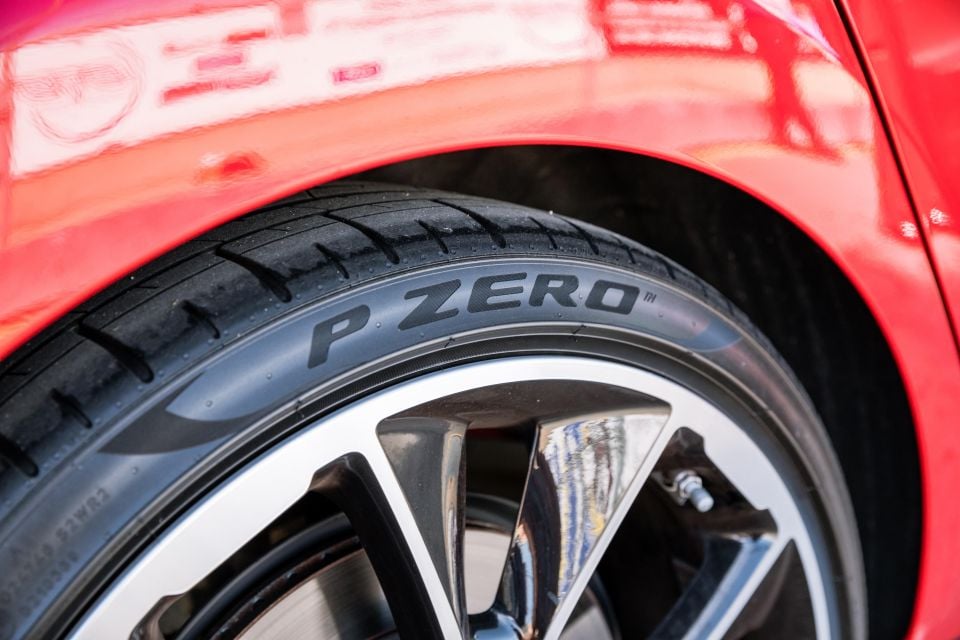
The i30 Fastback N would be a much quicker with a softer tyre and the chassis could definitely handle that, but I like the thought that has gone into what Hyundai is trying to achieve with the N brand and it makes sense here.
I ran all the laps with the traction and stability control off. It is not that the aids are intrusive, I just felt the way I could attack with this car, I had no need for them. In my opinion there’s no issue running with or without them.
I really liked the seating position! I could get nice and low and angled back. I would have liked a bit more support in the upper back for lateral control in the middle of the corner.
The instrument layout was good, I also really liked the shift lights and how easy they were to notice. This makes a huge difference on the track, especially when you’re not familiar with the car.
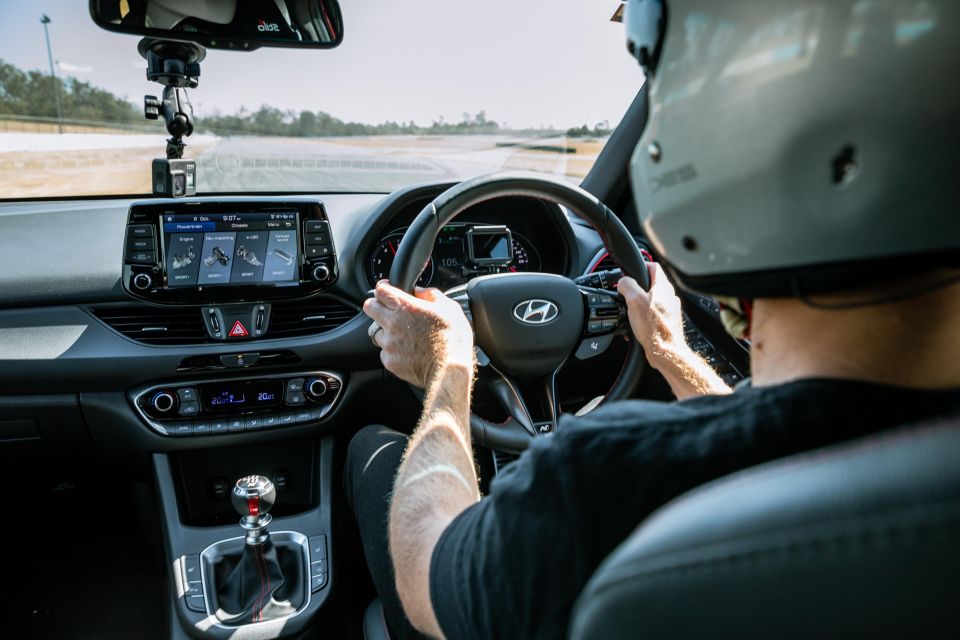
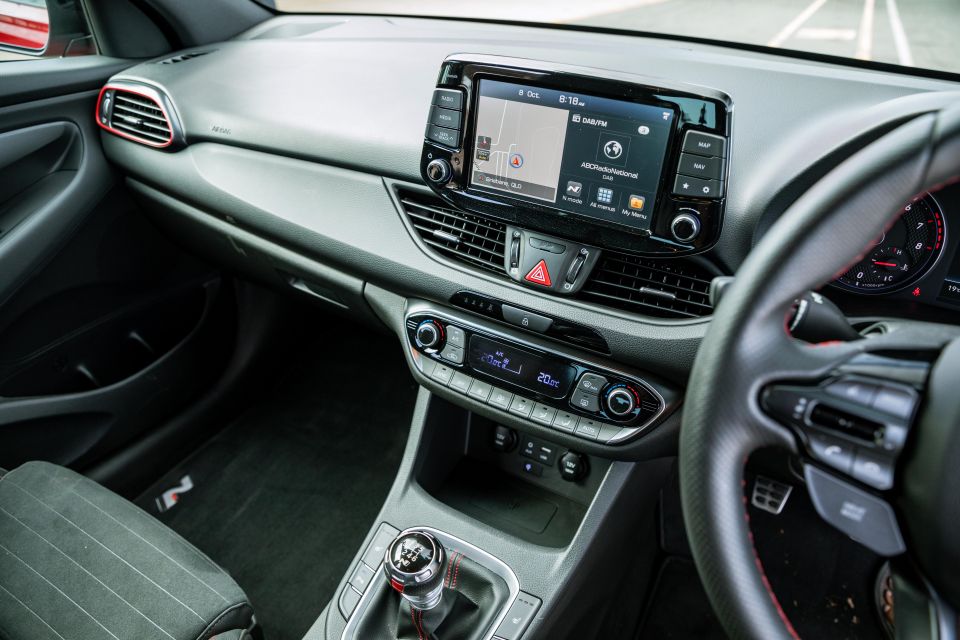
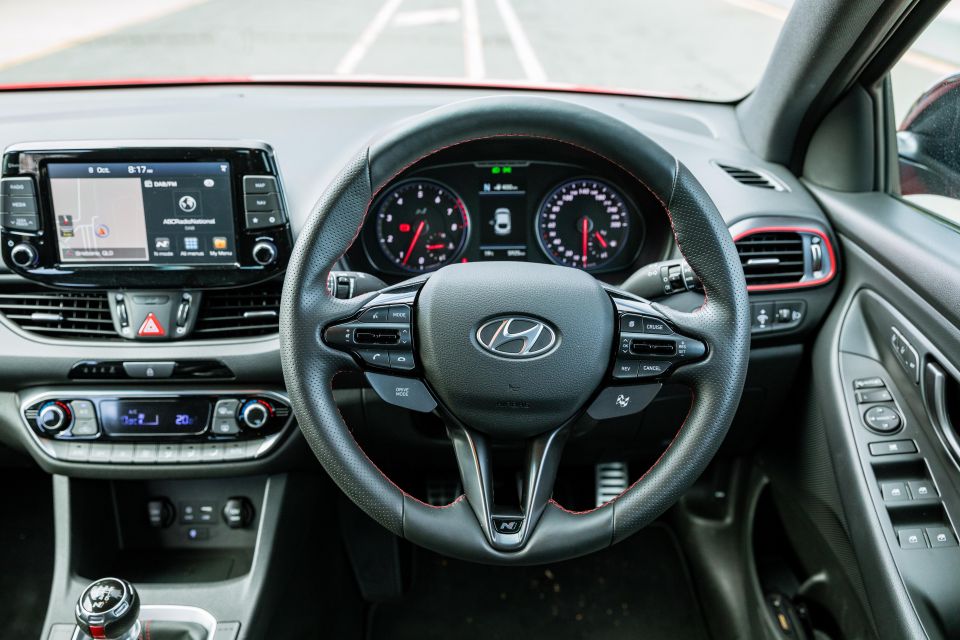
The ability to preselect the drive modes and have the selection buttons on the wheel was a nice touch as well.
My feeling in the car was much better than the lap time of 61.98 seconds it achieved. The car did many things really well and had no major faults, so I would have to put the time loss down to the manual transmission and the harder compound tyres.
The i30 Fastback N is definitely a car you can take to the track and have some fun, but there’s also potential to increase the performance with stickier rubber, making it a real contender against other hot hatches on the market.

Where expert car reviews meet expert car buying – CarExpert gives you trusted advice, personalised service and real savings on your next new car.


William Stopford
8 Hours Ago


Matt Campbell
16 Hours Ago


William Stopford
1 Day Ago


CarExpert.com.au
4 Days Ago


Max Davies
6 Days Ago


Damion Smy
6 Days Ago